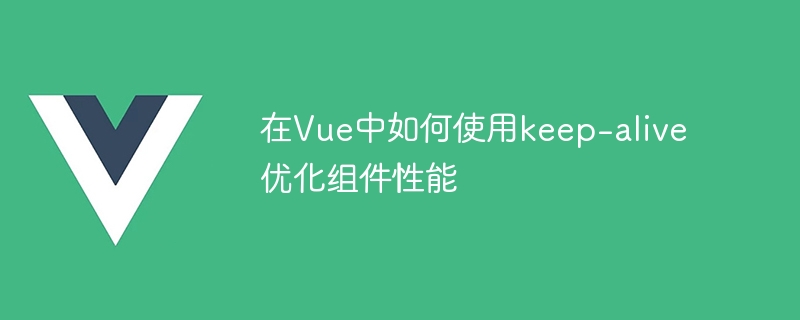

How to use keep-alive to optimize component performance in Vue
Introduction:
When developing Vue applications, we often encounter the need to frequently switch components Scenes. Re-rendering is required every time a component is switched, which will cause performance overhead. However, Vue provides a built-in component called keep-alive that can help us optimize the performance of the component. This article will introduce how to use keep-alive and provide specific code examples.
1. The role of keep-alive
keep-alive is a built-in component of Vue, used to cache stateful components. By wrapping a component in a keep-alive, you can keep the component's state in memory and avoid re-rendering each time. This can significantly improve application performance.
2. Steps to use keep-alive
The steps to use keep-alive to optimize component performance are as follows:
<template>
<div>
<h1>父组件</h1>
<keep-alive>
<child-component></child-component>
</keep-alive>
</div>
</template><template>
<div>
<h2>子组件</h2>
<!-- 组件内容 -->
</div>
</template>
<script>
export default {
name: 'child-component',
// 组件的其他选项
}
</script>In this way, when switching to other components, the subcomponents wrapped in keep-alive will be cached and retain their previous state. When switching back again, the component will be loaded directly from the cache, eliminating re-rendering time and improving performance.
3. keep-alive and life cycle hook function
When using keep-alive, you need to pay attention to the changes in the component's life cycle hook function. Components wrapped by keep-alive will trigger two additional life cycle hook functions: activated and deactivated.
You can use these two hook functions to perform some additional operations, such as requesting data in activated and cleaning up resources in deactivated. The following is an example:
<template>
<div>
<h2>子组件</h2>
<!-- 组件内容 -->
</div>
</template>
<script>
export default {
name: 'child-component',
activated() {
// 组件被激活时,执行一些操作,例如请求数据
this.fetchData();
},
deactivated() {
// 组件被停用时,执行一些操作,例如清理资源
this.resetData();
},
methods: {
fetchData() {
// 请求数据的逻辑
},
resetData() {
// 清理资源的逻辑
},
}
}
</script>In this way, every time you switch to a subcomponent, the activated hook function will be triggered and the fetchData method will be executed to request the latest data. When switching to other components, the deactivated hook function will be triggered and the resetData method will be executed to clean up resources.
4. Notes
When using keep-alive, you need to pay attention to the following points:
Summary:
Using keep-alive can optimize the rendering performance of components in Vue applications. Simply wrap the components that need to be cached in keep-alive to reduce unnecessary re-rendering. At the same time, additional operations can be implemented through activated and deactivated hook functions. When using keep-alive, you need to pay attention to some usage details, such as caching of dynamic components, changes in hook functions, etc.
The above is an introduction and detailed code examples of using keep-alive to optimize component performance in Vue. Hope it can help you in your actual project development.
The above is the detailed content of How to use keep-alive to optimize component performance in Vue. For more information, please follow other related articles on the PHP Chinese website!
 What does c-side and b-side mean?
What does c-side and b-side mean?
 What to do if notepad.exe is not responding
What to do if notepad.exe is not responding
 vue common instructions
vue common instructions
 What are the css3 gradient properties?
What are the css3 gradient properties?
 What is the working principle and process of mybatis
What is the working principle and process of mybatis
 How to recover permanently deleted files on computer
How to recover permanently deleted files on computer
 Ethereum browser blockchain query
Ethereum browser blockchain query
 How to recover accidentally deleted files
How to recover accidentally deleted files




